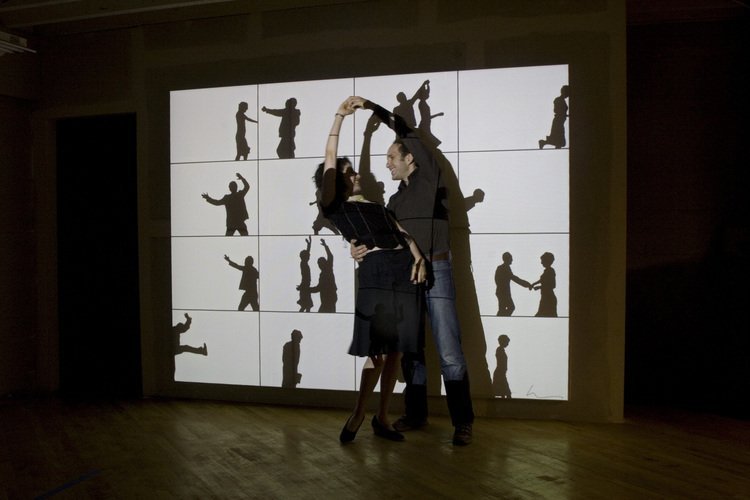Scott Snibbe is a new media artist, author, and host of the meditation podcast A Skeptic’s Path to Enlightenment.
About Scott Snibbe
Scott Sona Snibbe is a pioneer of interactive art, art that is co-created with its audience. He’s best known for immersive art installations that use projectors and computer vision to respond to human bodies moving in physical space.
Snibbe’s works of new media art span immersive art, installation art, digital art, software art, generative art, sound art, app art, and internet art, and he has collaborated with Björk, Beck, Philip Glass, and other musicians.
His interactive art installations have been exhibited in art galleries worldwide and can be found in the contemporary art collections of New York’s Museum of Modern Art, The Whitney Museum of American Art, and other museums, science centers, and private collections.
Boundary Functions (1998) is an immersive art installation that shows people’s personal space as they walk over a projected floor.
Deep Walls (2002), captures the movements of people in front of a screen and plays them back in silhouette.
Björk: Biophilia (2011), was the world’s first app album created in collaboration with Björk and other artists and engineers, and the first app acquired for New York MoMA’s permanent art collection.
Gravilux (1998, 2010), an interactive starfield meditation was first an art project then became a number one bestselling app in Apple’s iTunes App Store.
Snibbe is the founder of several creative technology companies. His interactive media startup, Snibbe Interactive, produced large-scale interactive experiences for public spaces, film studios, science museums, and exhibition spaces, including the Beijing 2008 Olympics and a collaboration with director James Cameron on The Avatar Exhibition.
Snibbe’s mobile startup, Eyegroove, was a social network for creating and sharing music videos, a precursor to TikTok that was acquired in 2016 to integrate its augmented reality video effect technology into Instagram. Snibbe was also an early part of the team that created the special effects and animation software Adobe After Effects.
Avatar Exhibition (2013), interactive projections, tables, augmented and virtual reality that brought the technologies of Avatar the Movie to life.
Snibbe worked as a technology researcher at Brown University and Interval Research, making early contributions to the foundations of 3D computer graphics and animation, human-computer interaction, haptics, and emotionally expressive robots. His award-winning paper, Social Immersive Media, defines the interface principles of immersive art for interactive camera/projector systems.
Social Immersive Media. A scientific paper defining interface principles for immersive art. (CHI Computer Human Interface conference, best paper award 2009)
Snibbe has been a Tibetan Buddhist practitioner for 25 years and dedicates much of his time to teaching meditation via A Skeptic’s Path to Enlightenment, a nonprofit he co-founded that offers secular Buddhist meditation classes, and a weekly podcast featuring conversations with Buddhist practitioners and scholars.
To learn more about Snibbe’s interactive artwork, watch a 2011 CNN “Next List” profile on Snibbe, a recent artist’s talk at UC Santa Barbara, the 2013 Future of Storytelling documentary “The Future of Music”, Snibbe’s 2012 lecture at the Stanford Human Computer Interface Seminar, Interactivity as a Medium, the 2014 Creator’s Project profile “Building an iPad App for Björk”, and a 2005 PBS documentary on Snibbe’s early work and studio.








